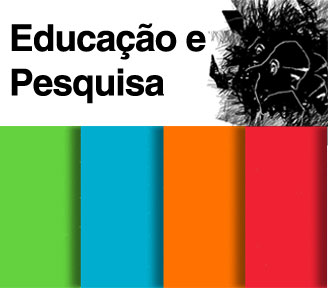Learning to be a Reinadeiro in the daily life of the Quilombo da Irmandade do Rosário of Justinópolis
DOI:
https://doi.org/10.1590/S1678-4634202248245486Keywords:
Learning, Justinópolis Quilombo, Skills, Daily lifeAbstract
The proposal of showcasing the learning processes through the daily practices of Reinado Mineiro is to expand an understanding of the numerous ways of learning. From this perspective, being involved in the daily practices leads us to describe and seek to understand how to become a Reinadeiro, especially through the musicality of Reinado’s children and youth. In the Quilombo da Irmandade do Rosário of Justinópolis/MG we find aesthetics designed in the dances, songs, and costumes that diversify in the various existing practices, such as the sacred drums of Candombe, the Irmandade do Rosário, the Caravana de Santos Reis, the Pastorinhas, the Capoeira Angola, the Arraial Pé de Cana, and the most recent Coral Vozes de Campanhã. In this territory, learning is present in the social life activities that are directly related to the acquisition of skills, to its relationships, contexts, and daily life which are shown in/with the day-to-day world, the territory where knowledge is built, felt and perceived. For these reflections we dialogue with Jean Lave’s “Social Theory of Practice” (1996), which claims a relational approach and whose fundamental principle is not to separate people from their daily lives, reaffirming that learning is inseparable from daily life and people’s lives.
Downloads
References
ARROYO, Margarete. Um olhar antropológico sobre práticas de ensino e aprendizagem musical. Revista da ABEM, Londrina, v. 8, n. 5, 2000.
DEBORTOLI, José Alfredo; SAUTCHUK, Carlos Emanuel. Técnica, corpo e arte: aproximações entre antropologia e motricidade. Licere, Belo Horizonte, v. 16, n. 2, 2013.
GOMES, Núbia Pereira de Magalhaes; PEREIRA, Edimilson Almeida. Arturos: olhos do rosário. Belo Horizonte: Mazza, 1990.
INGOLD, Tim. Being alive. London: Routledge, 2011.
INGOLD, Tim. Da transmissão de representações à educação da atenção. Educação em Revista, Porto Alegre, v. 33, n. 1, p. 6-25, 2010.
INGOLD, Tim. Estar vivo: ensaios sobre movimento, conhecimentos e descrição. Petrópolis: Vozes, 2015.
INGOLD, Tim. The perception of the environment: essays on livelihood, dwelling and skill. London: Routledge, 2000.
LAVE, Jean. Apprenticeship in critical ethnographic practice. Chicago: University of Chicago Press, 2011.
LAVE, Jean. Horizontes Antropológicos, Porto Alegre, v. 21, n. 44, p. 37-47, jul./dez. 2015.
LAVE, Jean. Teaching, as learning, in practice. Mind, Culture and Activity, London, v. 3, n. 3, p. 139-164, 1996.
LAVE, Jean; PACKER, Martin. Hacia una ontología social del aprendizaje. Revista de Estudios Sociales, Bogotá, n. 40, p. 12-22, 2011.
LAVE, Jean; WENGER, Etienne. Situated learning: legitimate peripheral participation. New York: Cambridge University Press, 1991.
LUCAS, Glaura. Música e tempo nos rituais do congado mineiro dos Arturos e do Jatobá. 2005. Tese (Doutorado em Música) – Centro de Letras e Artes, Universidade do Estado do Rio de Janeiro, Rio de Janeiro, 2005.
MARTINS, Leda Maria. Afrografias da memória: o reinado do Rosário no Jatobá. Belo Horizonte: Mazza, 1997. (Perspectiva).
MARTINS, Leda Maria. A oralitura da memória. In: FOSENCA, Maria Nazareth Soares (org.). Brasil afro-brasileiro. Belo Horizonte: Autêntica, 2000. p. 61-86.
VINCENT, Guy; LAHRE, Bernard; THIN, Daniel. Sobre a história e teoria da forma escolar. Educação em Revista, Belo Horizonte, n. 33, p. 7-48, jun. 2001.
WAGNER, Roy. A invenção da cultura. São Paulo. Cosac Naify, 2012.
Downloads
Published
Issue
Section
License
Copyright (c) 2022 Educação e Pesquisa

This work is licensed under a Creative Commons Attribution-NonCommercial 4.0 International License.
Authors assume exclusive responsibility for the concepts expressed in their articles, which do not necessarily reflect the journal’s opinion.
Permission to photocopy all or part of the material published in the journal is granted provided that the original source of publication be assigned.



